Why migrate Windows 10 to SSD?
Since solid-state drives (SSD) have advantages over mechanical hard drives (HDD) in terms of temperature, read and write speed, and durability, when you are not satisfied with the performance of the computer, there is no better way than replacing HDD with SSD.
However, replacing an SSD doesn't mean you need to reinstall Windows 10 on the SSD, unless the current system encounters problems such as not booting. Otherwise you can migrate system to new SSD to avoid reinstallation.
If you are wondering how to achieve this, don't worry, this article will show you how to use a reliable tool to migrate Windows 10 to SSD without reinstalling.
Using powerful tool to migrate Windows 10 to SSD without data loss
Now, I highly recommend you a Windows partition manager named AOMEI Partition Assistant Professional. This is one of the popular OS migration tool on the market, it is compatible with Windows 10, 8, 7, as well as Windows 11.
As for why I recommend it so much? Because it has these advantages: Compatibility, it supports many types of SSD, such as Seagate, Maxtor, Kingston, Sandisk, HP, WD, Samsung, Toshiba, etc. Simple operation, it has a graphical user interface and comes with a tutorial. Safe, you can preview the operation before submitting any task, without worrying about data loss caused by operation errors. Comprehensive, it's an all-in-one tool with several useful features built in.
If you want to move Windows 10 to SSD easily and safely, it is your best choice.
Step by step: Migrate Windows 10 to SSD
To migrate only Windows 10 to SSD, you need to follow 3 steps.
Step 1. What you need to do before migrating
►Connect the SSD to the PC.
If you're using a laptop, you'll need a SATA to USB adapter, as most laptops tend to have only one hard drive slot, so you'll need an adapter to connect the SSD. If you are using a desktop computer, then you need to install an SSD in the host computer.
►Initialize SSD
If the SSD is new, there's a good chance it wasn't initialized. You need to press "Windows + R", type "diskmgmt.msc" and hit Enter to open Disk Management to initialize the SSD. Otherwise, Windows won't recognize it.
►Make sure the power connection is normal
Please do not ignore this operation, if the power connection is poor, it may cause the migration task to fail and cause data loss.
Step 2. How to migrate Windows 10 to SSD
How to use AOMEI Partition Assistant Professional to move Windows 10, please refer to the following steps:
-
Install and open AOMEI Partition Assistant Pro. Click on “Migrate OS to SSD” in the left pane. An introduction about this wizard will come into your sight, read it and click “Next”.
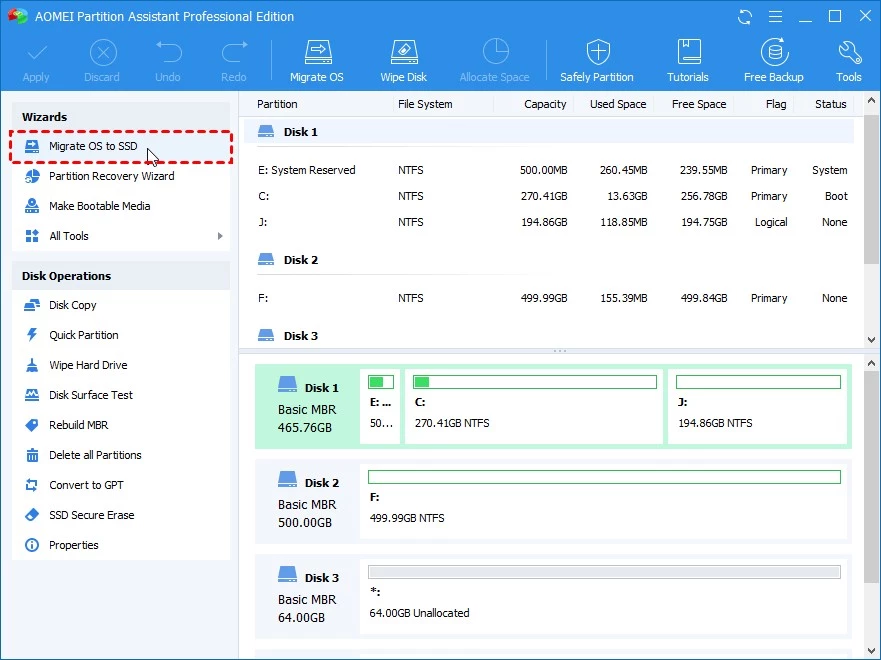
-
Select the unallocated space on SSD as the destination location and then click “Next”.
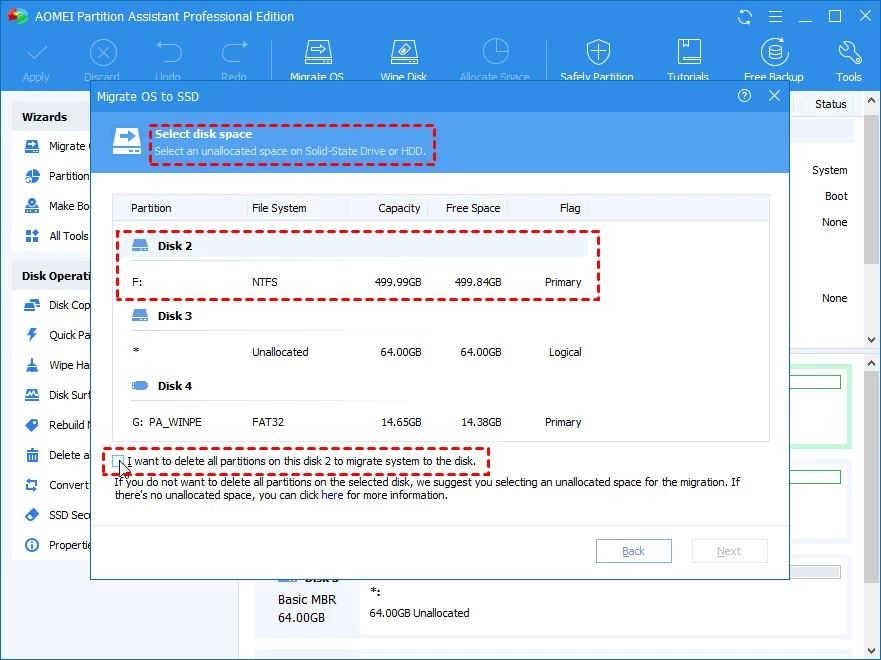
-
You are able to resize the system partition and change drive on this page. Then a note on how to boot Windows 10 on SSD will pop up. Keep it in mind and click “Finish”.
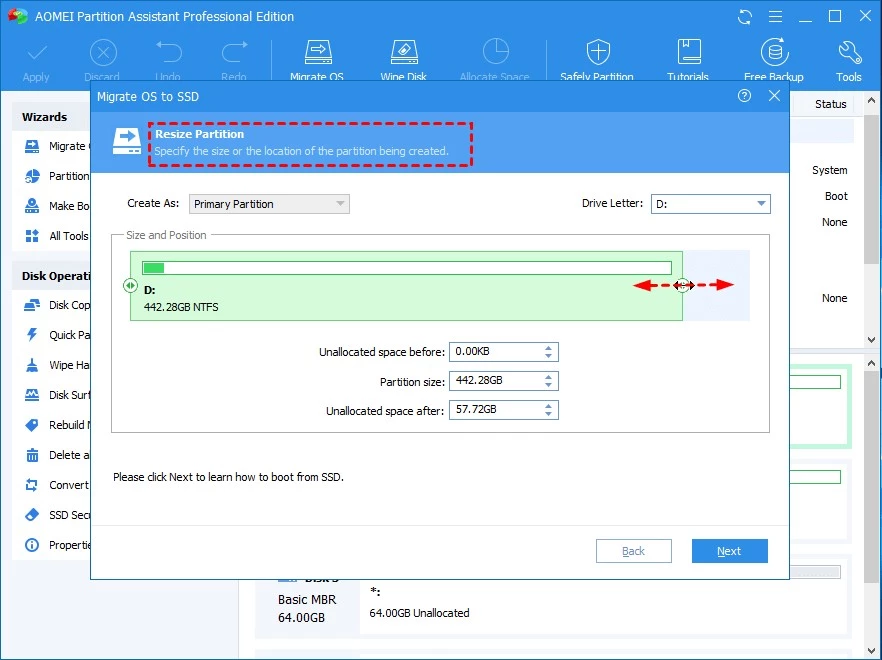
-
Confirm all operations and now the E: drive is the cloned Windows 10. Then click on “Apply” > “Proceed” to execute the Windows 10 OS migration to SSD. A reboot is required.
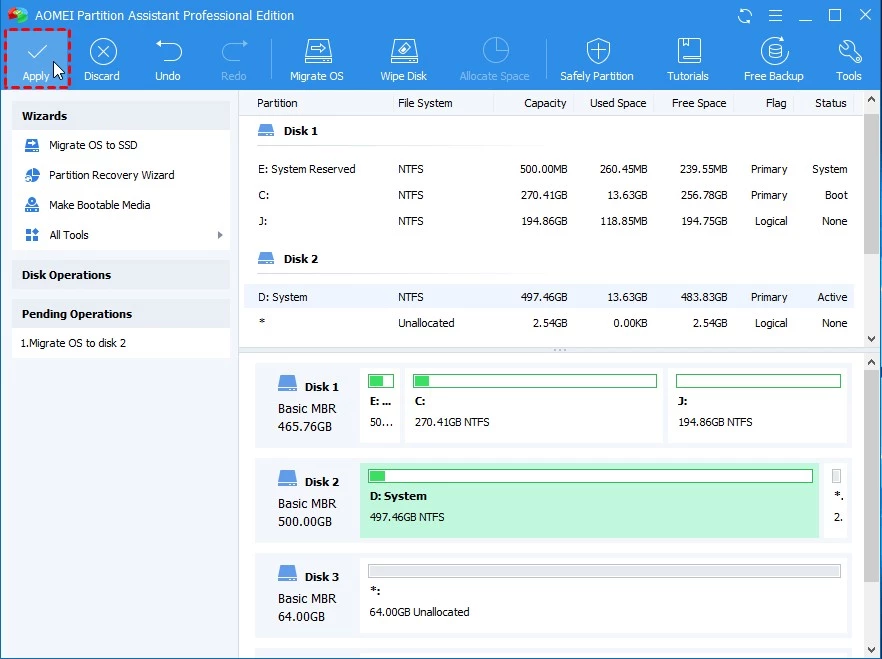
Step 3. Boot Windows 10 from SSD
After that, you have successfully migrated Windows 10 to SSD. Now, all you need to do is boot Windows 10 from the SSD.
►For laptop users
You just need to install the SSD and start the computer to run Windows 10.
►For desktop users
You need to enter the BIOS Settings during the restarting process of the computer. In the BIOS menu, press the arrow keys on the keyboard to enter the Boot tab and change the boot drive to use the new SSD as the first boot device. Then, follow the instructions in the BIOS utility to navigate to the Exit tab and select the Exit Save Changes option to save changes to the boot order. Restart your computer to run Windows 10.
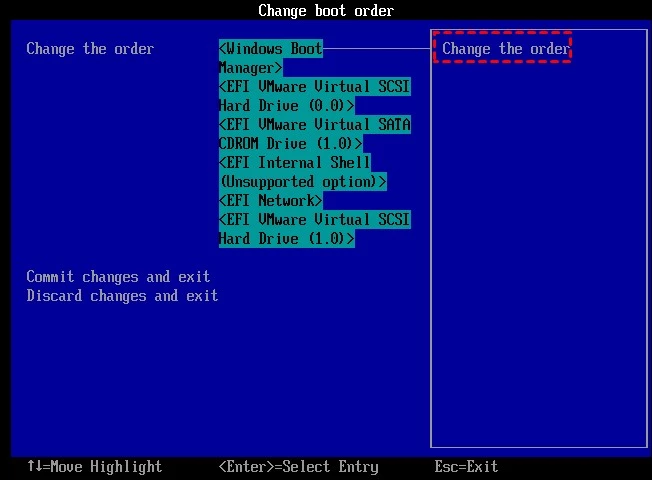
Final words
In conclusion, this is the full guide of migrating Windows 10 to SSD by AOMEI Partition Assistant Professional. With it, you can manage disks and partitions easier.
Apart from migrating the system, it also supports resolving other issues such as Windows extend volume greyed out, Windows can’t boot, convert MBR to GPT in Windows 10 and so on.
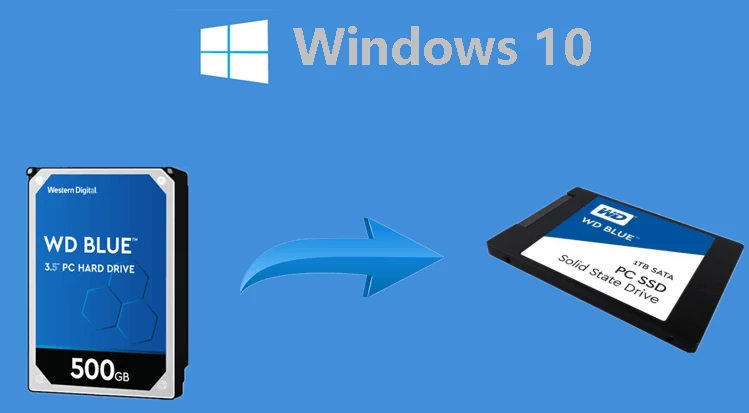

Comments (1)